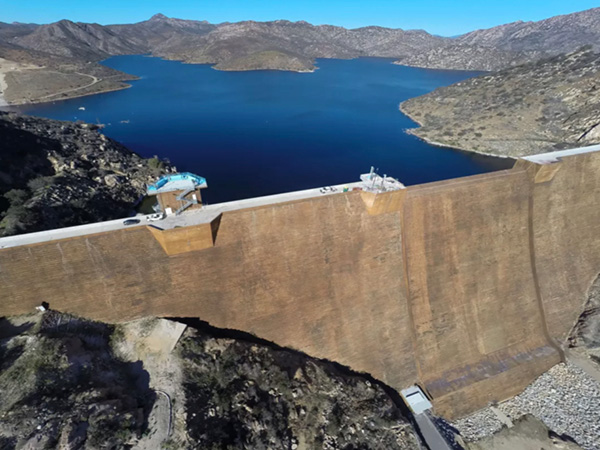
500 MW San Vicente Pumped Storage Hydro Project
Client
Berkshire Hathaway Energy and Kiewit InfrastructureLocation
California, USAHighlights
- Project concept and layout optimization
- Close working relationship with the owner, EPC contractor, and water-to-wire equipment suppliers to fully optimize the project
- RCC upper reservoir
- Tunnels and underground powerhouse
- Variable speed reversible pump turbines with hydraulic short circuit capability
- Use of the existing San Vicente reservoir as the project’s lower reservoir

Overview
The City of San Diego and the San Diego Water Authority are evaluating the feasibility of developing a pumped storage hydro project at the City of San Diego’s San Vicente reservoir to provide energy storage and ancillary electrical services into the southern Californian grid. It would store 4,000 megawatt-hours per day (500 megawatts of capacity for eight hours), enough energy for about 135,000 households. The development of the project is key to achieving California’s 100% zero-carbon electricity mandate by 2045 and the need for long-term storage assets to support that goal.
Role
Knight Piésold was engaged by the EPC contractor, Kiewit Infrastructure, and Berkshire Hathaway Energy as their lead designer for the 500 MW San Vicente Pumped Storage Hydro Project and is responsible for overall project optimization and detailed design of the following:
- Lower reservoir that makes use of the existing San Vicente RCC dam (i.e., water supply reservoir to the City of San Diego)
- New upper RCC reservoir
- Underground powerhouse with connecting waterways (tunnels and penstocks)
- 500 MW installation with variable speed reversible pump turbines
- Intake/outlet structures in the upper and lower reservoirs
- Access roads and access tunnels
- 230 kV transmission and interconnection
Results
Although the use of the existing San Vicente reservoir makes the project more economically attractive, it does create some interesting challenges that were overcome by the design team, including:
- The huge head variation in the lower reservoir presents some interesting challenges, and a detailed hydraulic analysis was required that ultimately led to the selection of variable speed reversible pump turbines units, which are more efficient and capable of handling the large head range.
- The optimization of the lower reservoir intake/outlet structures also required a detailed options assessment, including consideration of Norwegian Lake Taps, American (Dry) Lake Taps, and Horizontal Intakes constructed in a deep excavation channel with high rock plug cofferdam wall.
- Detailed 4-Quadrant Hydraulic Transient Studies were essential to help further optimize waterways and significantly reduce capital costs with optimized siting of the powerhouse and waterways to eliminate the need for surge facilities.
- FERC permitting support and engaging FERC Board of Consultants.